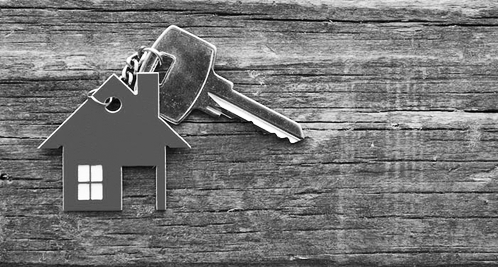Securing a mortgage during or after a consumer proposal

There is a story behind every consumer proposal. As a mortgage broker, you’re the one who will hear those stories and put together mortgage solutions for your clients who may also be in consumer proposals. Finding the right mortgage solution while keeping mortgage affordability top of mind is where we come in. Alternative lenders look to understand those stories and to provide options that put your client back on the right path to financial stability.
What is a consumer proposal? A quick explanation for your clients
Clients struggling with debt might ask, “What is a consumer proposal?” In short, it’s a legally binding debt relief process where a person proposes a way to pay creditors some of what they owe or spread payments out over a longer time period, up to five years. Your client would develop the consumer proposal with a Licensed Insolvency Trustee.
A consumer proposal is not the same thing as bankruptcy, but as far as credit ratings go, they have a similar effect.
Will a consumer proposal affect a mortgage renewal? What your clients need to know
How will a consumer proposal affect my mortgage renewal? That’s the question at the back of any homeowner’s mind when facing a consumer proposal. After all, losing one’s home would be devastating.
Related: 5 Part Guide: The Mortgage Process & How To Get Approved
Simply put, a client who is in or has recently completed a consumer proposal is seen as a credit risk. Completing their proposal does not erase their history of not paying their debts. Standard lenders will not likely finance a mortgage until your client has had at least two years with a clean history following the end of their consumer proposal. Even then, to have a chance for approval, your client will need a 20% down payment and paperwork that demonstrates they have been working on rebuilding their credit.
An alternative lender like Bridgewater Bank is more likely to take on this kind of deal because they look at the people and circumstances as well as the numbers. Alternative lenders will look at your client’s specific situation and assess the risk.
How long after a consumer proposal can clients expect to get a mortgage?

Once someone gets their finances back on track, they may wonder how long they must wait after a consumer proposal to get a mortgage. The answer depends on the lender. Traditional lenders are unlikely to consider a new mortgage until the client has fixed their credit. Alternative lenders are more willing to work with your client to help them move forward.
Your client can apply for a mortgage at any time, even while they are in the middle of their consumer proposal, but the lender will still look at creditworthiness and require documentation. If mortgage financing or renewal refinancing is approved, your client will be asked to use the proceeds to pay out the consumer proposal.
Mortgage rate expectations while in a consumer proposal
Clients should expect higher mortgage rates while in a consumer proposal. There are some risks in financing mortgages in these situations, and the interest rate will reflect that. Once your client has started to rebuild their credit, they may be able to negotiate a better rate when it is time to renew the mortgage.
You might want to discuss why mortgage payments matter more than mortgage rates. Clients who have experienced a consumer proposal likely need solutions to help them manage their monthly budget. Looking at what they can afford to pay each month is a helpful strategy.
Can your client refinance to pay off a consumer proposal? Is it beneficial?
They can! Sometimes, refinancing a mortgage is the quickest way to pay off a large debt like a consumer proposal. In these situations, your client may need a larger mortgage to cover the mortgage amount and the remaining consumer proposal debt. Here are some things to consider:
- Is there enough equity in the home? No bank will finance a home for more than its value, so there must be some equity to cover the additional loan amount.
- Is the current mortgage term close to maturity or was it just renewed? The answer to this will determine just how large the prepayment penalties are likely to be if the mortgage is renewed early with a different lender. Additional costs won’t help a client who is already dealing with a consumer proposal.
- What was the reason for the consumer proposal? This question indicates risk, and this is where the client’s story matters. Did they lose their job and are catching up now that they are employed again? Did they gamble away their money? The lender will want to assess whether the situation is likely to happen again.
- How does your client currently rate on factors used to determine creditworthiness? Yes, your client’s consumer proposal means their credit score won’t be great. However, evaluate all the factors, such as credit history (or the rebuilding of it), bank statements, and employment.
If the client’s financial situation and current mortgage terms point toward refinancing, there are some good reasons to consider it.

5 reasons why refinancing a mortgage to pay off a consumer proposal is beneficial:
- Start rebuilding credit sooner. A consumer proposal must be fully paid out and a completion certificate issued before your client can begin fixing the damage to their credit. The sooner they pay off their debt, the sooner they can begin moving forward.
- Keep their mortgage. If their credit cards and loans were at the same bank as their mortgage, and are part of the consumer proposal, that bank may not want to renew their mortgage. Refinancing with a different lender may be a better option.
- Lower their monthly payments. Generally, refinancing and debt consolidation can result in less of their monthly paycheque going toward the debt.
- Make life easier. If your client can’t pass a basic credit check, they’ll have a hard time making large purchases, such as a car, or more routine purchases. Even cell phone providers check credit.
- Apply for credit again. Once the consumer proposal is paid out, your client can begin looking for options to rebuild their credit, including a credit card. The card might need to be a secured credit card, meaning the issuer must hold some security in return for issuing the card.
Rehabbing and fixing credit after a consumer proposal
Is there any easy credit fix once the consumer proposal is paid out? Not really. It requires responsible credit management for at least a couple of years before some lenders will consider your client an acceptable risk.
…Some credit card debt may continue to show late payments, even after the consumer proposal was filed and even after it has been completed.
The first thing your client should do is review their credit report and clean up reporting errors on their credit history. This can be a messy task, but it’s integral to rebuilding their credit. In particular, some credit card debt may continue to show late payments, even after the consumer proposal was filed and even after it has been completed.
Then there are some straightforward things they can do to build better credit:
-
- Use credit. This may seem odd, but your client cannot build a credit history without doing this. They just need to do it responsibly and spend within their credit limit, not over.
- Pay bills on time. Don’t wait for the due date—pay three to five business days in advance to allow time for processing.
- Show stability. Don’t switch up a long-time cell phone contract or open new credit accounts when there is already an existing account.
- Continue to check their credit report for errors.
Disadvantages of a consumer proposal – when it’s not the right financial decision
The hit to a person’s credit rating is the biggest disadvantage of a consumer proposal. If there are other ways to address the debt, those options should be explored before making the final decision. The impact of a consumer proposal lasts for years. Once your client agrees to it, they need to be able to make the payments or they’ll end up in the same situation they were before.
A Licensed Insolvency Trustee can help determine whether a consumer proposal is the way to go.
A final thought on consumer proposals
Without question, it’s easier to get into debt than to get out. A consumer proposal may be the answer for a client who is committed to better managing debt in the future. It does not mean they are a bad credit risk—that’s where their story comes in. Someone who lost their job, accumulated too much debt just to live, and now has a new job might be someone worth taking a risk on.
If you have a client with a consumer proposal, we may be able to help with the mortgage. You can contact one of our underwriters or business development managers to explore the options. We’re always available to provide you with the expert advice you need to help your clients.









